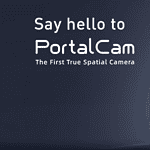

The recent unveiling of the Apple Vision Pro and the Meta Quest 3 has increased interest in the XR technology (Extended Reality) has been reignited. While much of the interest has been focused on the stunning graphics, powerful processors and immersive audio features, there is one crucial component that is often overlooked: the Lidar sensor.
Lidar, short for Light Detection and Ranging, is a remote sensing method that uses light in the form of a pulsed laser to measure the distance to objects. By analyzing the reflected light, lidar can create a detailed 3D map of the environment. This technology is used in various fields, from autonomous vehicles to surveying.
Lidar enables devices such as the Apple Vision Pro and Meta Quest 3to accurately capture and understand their surroundings. This is crucial for mixed reality experiences, where virtual objects need to blend seamlessly with the real world. For example, a virtual character in a game can navigate around real obstacles to create an even more immersive experience.
By creating detailed 3D models, Lidar helps devices to identify and track objects in real time. This capability opens up possibilities for interactive experiences, such as placing virtual furniture or game scenarios that react to the physical environment. Imagine an AR app that allows you to place virtual furniture in your living room to see how it fits and looks before you make a purchase.
Lidar provides precise depth information that is essential for creating realistic and immersive virtual experiences. Accurate depth perception is crucial for tasks such as virtual collaboration, where participants need to perceive objects at the right size and distance. This is particularly beneficial in professional environments, such as virtual design meetings or remote teamwork.
Lidar can improve hand and gesture tracking capabilities by providing additional depth information. This leads to a more natural and intuitive interaction with virtual content. For example, surgeons can use VR simulations for training, where precise hand movements and depth perception are crucial.
Apple has also integrated Lidar technology into its iPhones and iPads, further emphasizing the versatility and importance of this technology. Lidar fulfills several important functions in these devices:
On iPhones and iPads, Lidar improves the camera system by improving autofocus in low light conditions and enabling more precise portrait mode effects. It also significantly improves augmented reality (AR) applications through precise spatial mapping and object recognition.
Lidar's precise depth sensing enables more sophisticated AR experiences. AR applications can now place virtual objects in the real world with improved accuracy and ensure that they interact naturally with their surroundings. This is useful for everything from gaming to interior design.
With Lidar, iPhones and iPads can take accurate measurements of objects and spaces, making them a valuable tool for professionals in architecture, design and construction. Apps like Apple's Measure can use Lidar to take more precise measurements than ever before.
The integration of lidar into XR hardware has a profound impact on mixed reality experiences. By accurately sensing and understanding the physical environment, the devices can create more immersive and believable virtual worlds.
While the visual appeal and computing power of XR devices often steal the limelight, Lidar is the unsung hero that makes these experiences truly magical. Its ability to accurately capture and understand the physical world is essential for creating immersive and interactive mixed reality experiences. As lidar technology continues to evolve, we can expect even more groundbreaking applications in the XR space.
Want to delve deeper into a specific aspect of Lidar in XR? Whether it's the technical functionality, integration into specific industries or future potential, there's a wealth of information to discover about this fascinating area of technology.

Are you interested in developing a virtual reality or 360° application? You may still have questions about budget and implementation. Feel free to contact me.
I am looking forward to you
Clarence Dadson CEO Design4real






